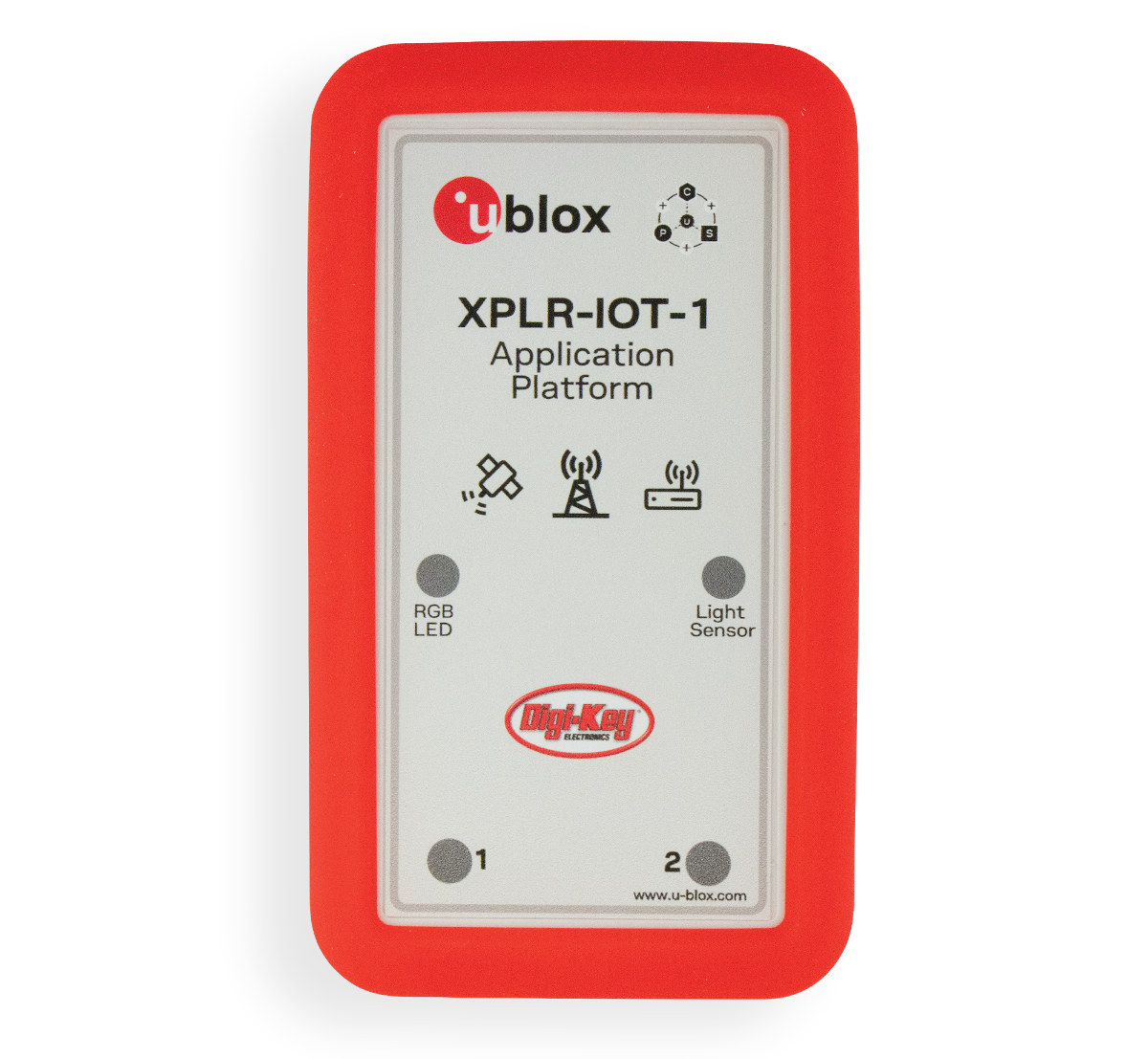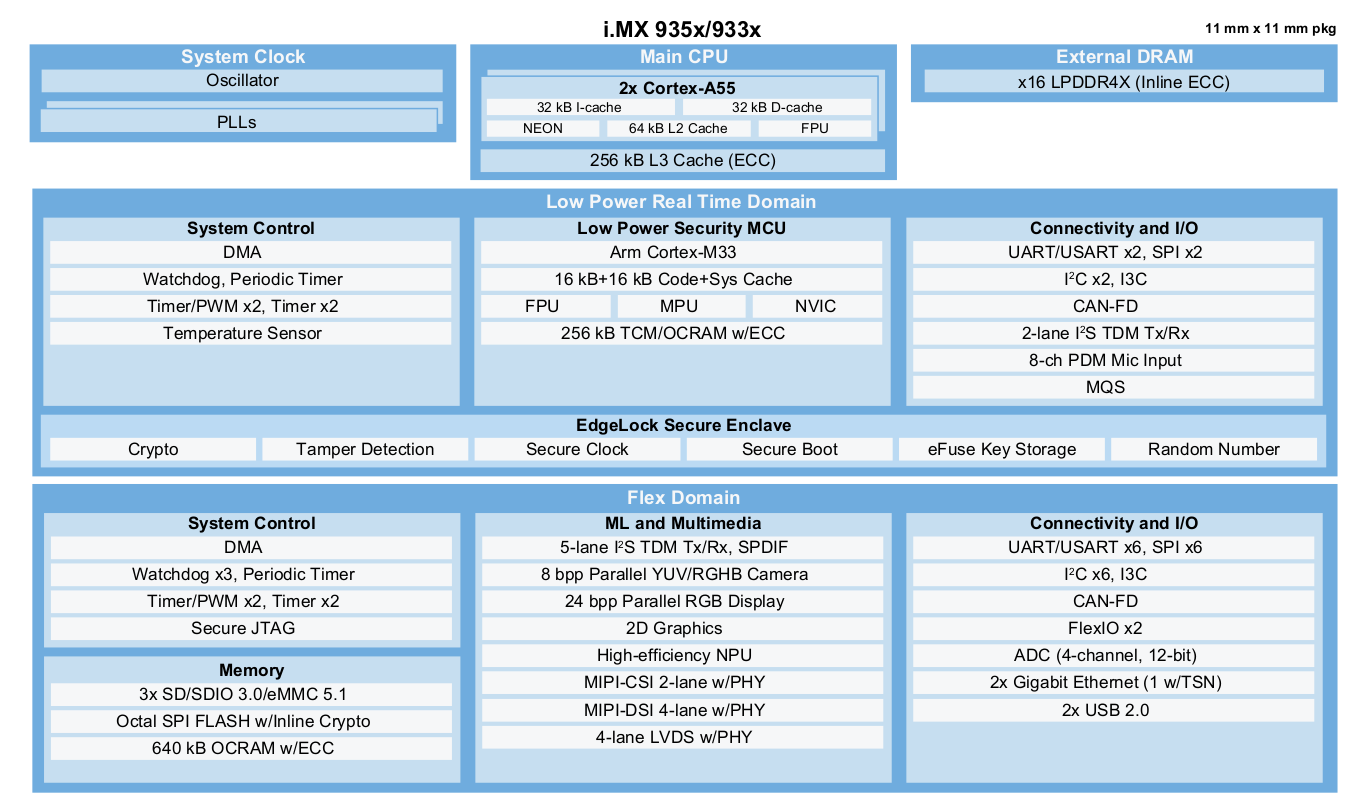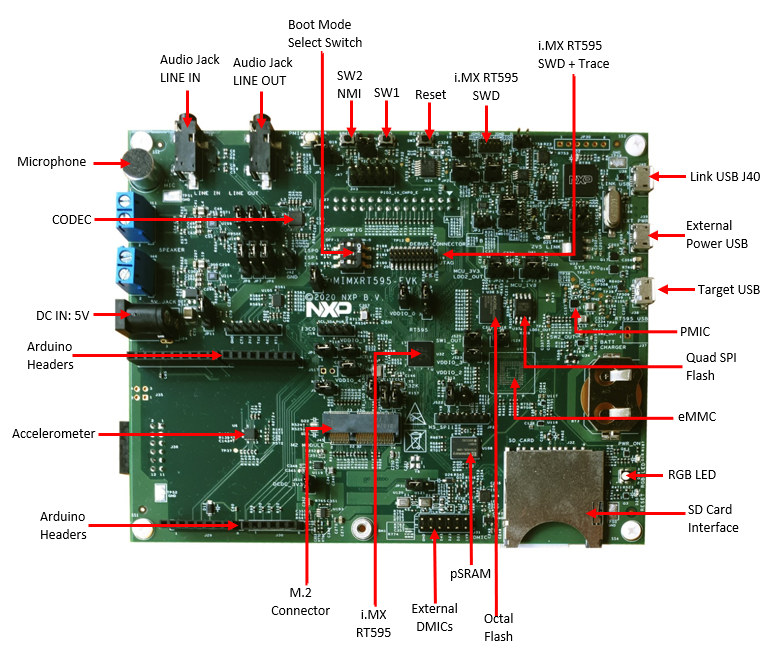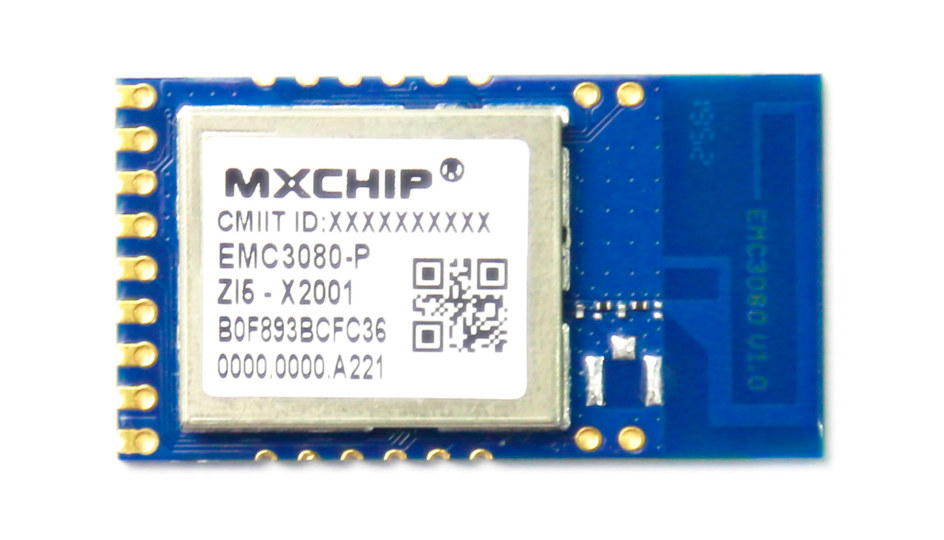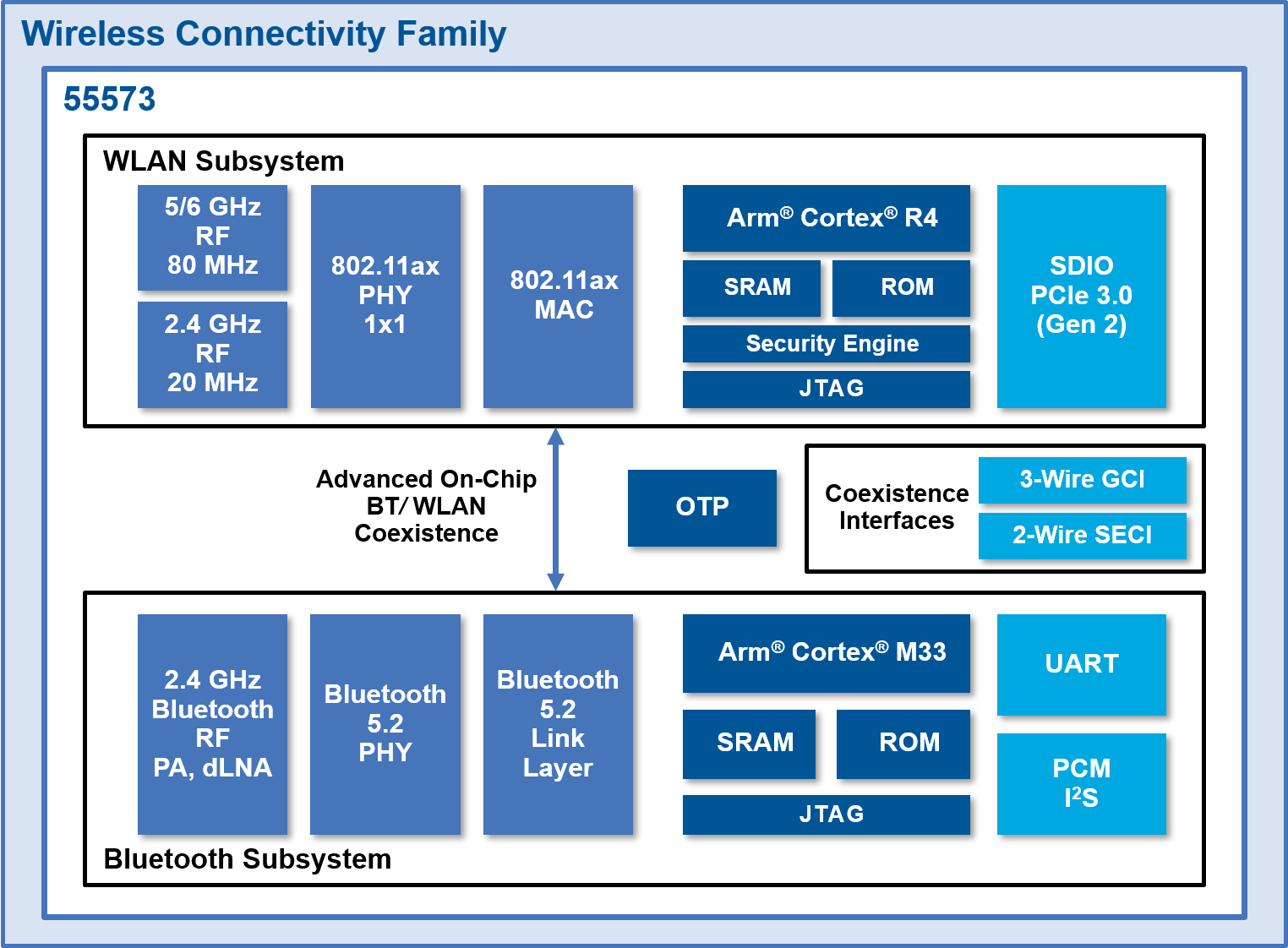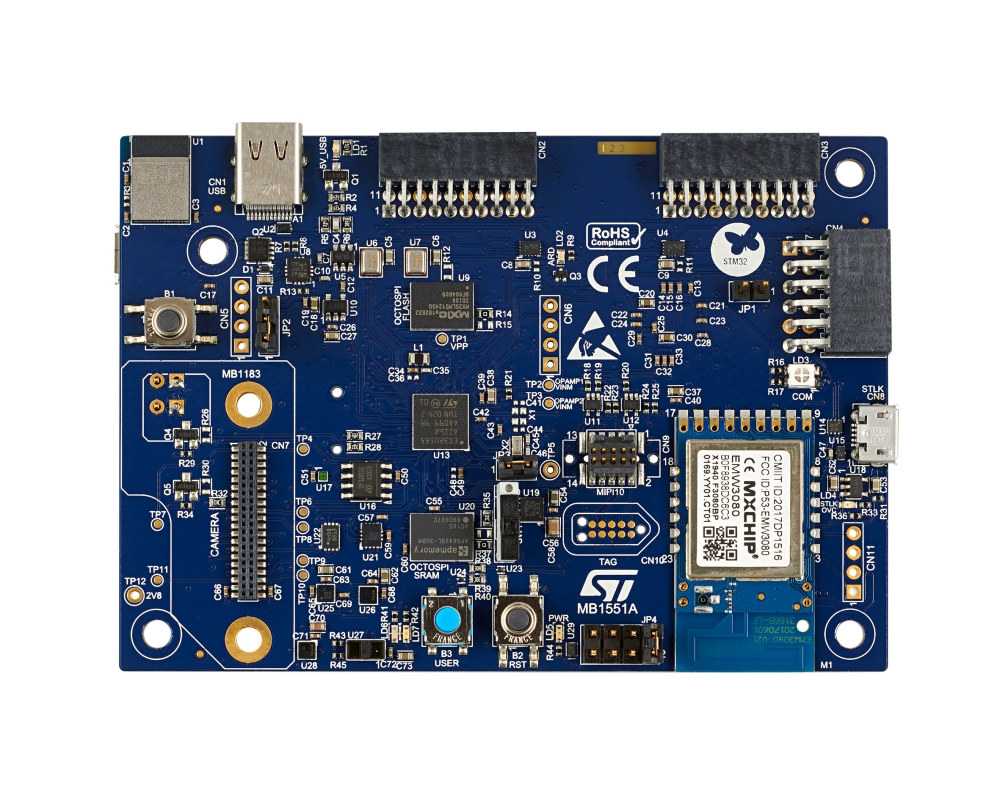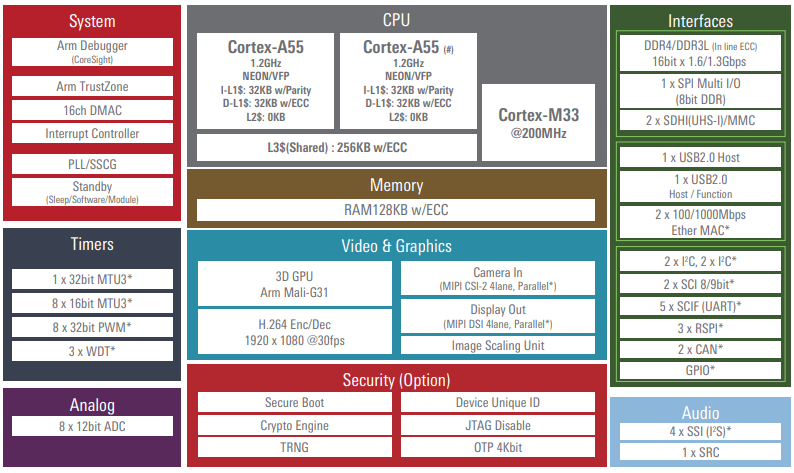u-blox XPLR-IOT-1 explorer kit is an all-in-one IoT evaluation platform with cellular IoT, Wi-Fi, Bluetooth Low Energy, and GNSS, plus some sensors to evaluate various IoT products and enable proofs of concepts such as logistics container trackers, industrial automation, sensor-to-cloud applications, and fleet management solutions. The device’s main module is the u-blox NORA-B106 with a dual-core Arm Cortex M33 microcontroller and Bluetooth LE 5.2 radio that host the application software and control the other modules, namely the SARA-R510S module for LTE-M and NB-IoT cellular connectivity, NINA-W156 2.4 GHz Wi-Fi module, and the MAX-M10S GNNS module. The XPLR-IOT-1 platform is also equipped with an accelerometer, a gyroscope, a magnetometer, and temperature, humidity, pressure, and ambient light sensors. u-blox XPLR-IOT-1 specifications: Main MCU – Nordic Semi nRF5340 dual-core Arm Cortex M33 @ 128/64 MHz with 512 + 64 kB RAM memory and 1024 + 256 kB flash (found in NORA-B106 module) Wireless […]
NXP i.MX RT1180 Cortex-M7/M33 crossover MCU integrates GbE TSN for industrial IoT communication
NXP i.MX RT1180 is the latest member of the company’s i.MX RT Series crossover MCUss with application processor-like performance. The 800 MHz dual-core Arm Cortex-M7/M33 microcontroller is specifically designed for industrial IoT communication with a Gigabit Ethernet port supporting time-sensitive networking (TSN). NXP also highlights that it is the first crossover MCU to include an EdgeLock secure enclave that “eases the complexity of implementing robust, system-wide security intelligence for industrial IoT applications”, and the new processor aims to bridge the gap between existing industrial systems and Industry 4.0 system. NXP i.MX RT1180 key features and specifications: CPUs – Arm Cortex-M7 @ 800 MHz + Arm Cortex-M33 @ 240 MHz (Optional: single-core Arm Cortex-M33) On-chip Memory – Up to 1.5 MB SRAM (ECC protected) with 512 KB of TCM for Cortex-M7 and 256 KB of TCM for Cortex-M33 Memory & Storage I/F – 2x FlexSPI for HyperRAM or HyperFlash 8/16/32-bit SDRAM/LPSDRAM […]
NXP i.MX 93 processor combines Cortex-A55 cores with Ethos U65 microNPU
NXP has unveiled the i.MX 93 processor family comprised of i.MX 935x, 933x, 932x, and 931x parts at this time with up to two Cortex-A55 cores, one Arm Cortex-M33 real-time core, as well as an Ethos U65 microNPU for machine learning (ML). We wrote about i.MX 9 family back in March with NXP telling us it would include an Arm Ethos U-65 microNPU and EdgeLock secure enclave, be manufactured with a 16/12nm FinFET class process, and includes the “Energy Flex” architecture to optimize power consumption by turning on/off specific blocks in the processor. The NXP i.MX 93 is the first family leveraging those new features, and we know have some more details. NXP i.MX 93 processor specifications: CPU 1x or 2x Arm Cortex-A55 @ 1.7 GHz with 32KB I-cache, 32KB D-cache, 64KB L2 cache, 256KB L3 cache with ECC 1x Arm Cortex-M33 @ 250 MHz low power microcontroller with 256KB […]
NXP i.MX RT500 Cortex-M33 Crossover MCU integrates DSP, 2D GPU for wearables and IoT devices
NXP i.MX RT500 is the second Cortex-M33 Crossover MCU following the NXP i.MX RT600 Series announced in 2018, and optimized for low-power HMI applications such as wearables and Smart Home & IoT devices. NXP Crossover MCUs are typically clocked at 600 MHz or more, but NXP i.MX RT500 Cortex-M33 is limited to 200 MHz, and combined with 200 MHz Tensilica Fusion F1 DSP as well as a 2D GPU, and power optimizations that enable long battery life of up to 40 days on a charge for wearables like smartwatches. NXP i.MX RT500 key features and specifications: MCU Core – Cortex-M33 @ up to 200 MHz with Arm TrustZone, M33 built-in Memory Protection Unit (MPU), PowerQuad hardware accelerator for DSP functions, CASPER crypto coprocessor for asymmetric cryptographic algorithms DSP Core – Cadence Tensilica Fusion F1 DSP @ up to 200 MHz On-Chip Memory Up to 5 MB of system SRAM accessible […]
$2 MXCHIP EMC3080 WiFi and Bluetooth LE IoT module integrates Cortex-M33 MCU
While nowadays most people from the maker community are working with ESP8266 or ESP32 modules or boards for IoT projects requiring Bluetooth LE and/or WiFi connectivity, we’ve also covered some low-cost alternatives such as Bouffalo Labs BL602 or Realtek RTL8710. MXCHIP EMC3080 module offers yet an alternative with 2.4 GHz 802.11 b/g/n WiFi and Bluetooth LE 4.2/5.0. Where it differentiates against other solutions is that it features a more secure Cortex-M33 core clocked at 100 MHz, as found in UNISOC V5663 and Ameba RTL8722DM wireless SoCs, but still getting a fairly low price tag of $2.35 on Seeed Studio, which drops to $2.10 per pieces for orders of 10 or more units. MXCHIP EMC3080 module specifications: MCU – MX1300CF Cortex-M33 processor at up to 100 MHz with 256KB SRAM, 2MB XIP flash, 384 or 512 bytes OTP memory Connectivity WiFi 802.11 b/g/n 1T1R WiFi @ 2.4GHz Single Frequency HT20 support […]
Infineon AIROC CYW5557x WiFI 6/6E targets IoT and streaming devices
WiFi 6E is a new wireless standard that operates in the 6 GHz frequency band. We’ve already seen it used in consumer products such as premium smartphones and routers, as well as some embedded SBCs that take Qualcomm WiFI 6E cards. But now Infineon, who purchased Cypress Semiconductors last year, has unveiled the AIROC CYW5557x family of WiFI 6/6E chipsets designed for the IoT, enterprise and industrial applications for the 1×1 models, and for multimedia, consumer and automotive applications with 2×2 MIMO. Infineon AIROC CYW5557x has three SKUs that share most of the same specifications: Devices CYW55573 with Wi-Fi 6E, 2×2 MIMO CYW55572: with Wi-Fi 6, 2×2 MIMO CYW55571 with Wi-Fi 6E, 1×1 (80MHz) Wireless features WiFI Arm Cortex-R4 core Wi-Fi 6/6E, Tri-band (2.4/5/6 GHz) OFDMA, MU-MIMO, TWT, DCM 2×2 MIMO or 1×1 SISO 20/40/80 MHz channels, 1024-QAM, up to 1.2 Gbps PHY data rate STA and Soft AP mode […]
STM32U5 Cortex-M33 MCU gets more performance, 2D graphics accelerator, and advanced security
The first STM32 MCU based on Arm Cortex-M33 core was the ultra-low-power STM32L5 microcontroller, and the company is now following up with the STM32U5 series also designed for smart applications including wearables, personal medical devices, home automation, and industrial sensors. The new family has a higher 160 MHz clock speed, up to 2048 KB flash, up to 786 KB RAM, a 2D graphics accelerator, several peripherals have been upgraded, and a new autonomous mode lets DMA and peripherals keep working while most of the device sleeps in order to save power. STM32U5 MCUs also integrate additional hardware security features, and are manufactured using a 40nm process, which the company says is the most advanced process suitable for microcontrollers. Just like for the STM32L5 family, there are two product lines in the STM32U5 series which mostly differ in their security features: STM32U575 with 1024 to 2048 KB of flash memory, 786 […]
Renesas RZ/G2L MPUs Feature Cortex-A55 & Cortex-M33 Cores for AI Applications
Renesas Electronics Corporation announced RZ/G2L MPUs, allowing enhanced processing for an extensive variety of AI applications. The RZ/G2L group of 64-bit MPUs includes three new MPU models featuring Arm Cortex-A55, and an optional Cortex-M33 core. These are RZ/G2L, RZ/G2LC, and RZ/G2UL MPUs. The Cortex-A55 CPU core typically delivers approximately 20 percent improved processing performance compared with the previous Cortex-A53 core, and according to Renesas, is around six times faster in “essential processing for AI applications”. The company already has four mid to high-end design level MPUs including RZ/G2E, RZ/G2N, RZ/G2M, and RZ/G2H, with combinations of Cortex-A53 and Cortex-A57 cores. The new RZ/G2L group of three MPUs forms the entry-level design with Cortex-A55. Hence, the seven MPU models together provide scalability from entry-level to high-end design. Common Key Features in RZ/G2L, RZ/G2LC, and RZ/G2UL MPUs Up to 2x Cortex-A55 cores Cortex-M33 core Camera interface (MIPI-CSI) Display interface (Parallel-IF) USB 2.0 interface […]


